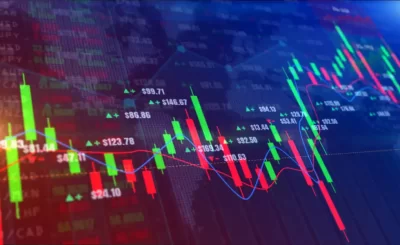Technical patterns are visual representations of price movements on a chart that connect price points over a specific period. They are based on the principle that historical price data provide valuable clues about future market behaviour. By studying these patterns, traders identify potential support and resistance levels, trend reversals, and continuation signals, enabling them to make more accurate predictions and strategic decisions.
Technical patterns are categorized into two main types: continuation patterns and reversal patterns. Continuation patterns suggest that the existing trend will continue, while reversal patterns indicate a potential change in the prevailing trend. Recognizing and interpreting these patterns accurately is crucial for traders to capitalize on market opportunities.
Continuation patterns – Unlocking trend continuity
- Triangles – Triangles are formed by connecting a series of higher and lower lows, creating a converging pattern. Ascending triangles indicate a potential bullish continuation, while descending triangles suggest a bearish continuation. Symmetrical triangles represent a neutral pattern, indicating a possible breakout in either direction.
- Flags and pennants – Flags and pennants are short-term continuation patterns that resemble small triangles. They are often formed after a significant price move, indicating a brief consolidation period before the trend resumes. Flags have a parallel trendline, while pennants have converging trendlines. Both patterns suggest a continuation of the prevailing trend.
- Wedges – Wedges are similar to triangles but have a more defined slope. There are two types of wedges – rising wedges and falling wedges. Rising wedges are formed by connecting a series of higher and lower highs, indicating a potential trend reversal. Falling wedges are formed by connecting lower and lower highs, suggesting a potential bullish continuation.
Reversal patterns – Identifying trend changes
- Head and shoulders – The head and shoulders pattern is a classic reversal pattern consisting of three peaks, with the middle peak being the highest. The two outer peaks are typically of similar height. This pattern suggests a potential trend reversal, with the neckline acting as a support or resistance level.
- Double tops and bottoms – Two consecutive peaks or troughs form double top and double bottom patterns. These patterns indicate a potential trend reversal, with the neckline acting as a critical support or resistance level. Double tops suggest a bearish reversal, while double bottoms indicate a possible bullish reversal.
- Cup and handle – The cup and handle pattern is a unique reversal pattern that resembles a cup with a handle. It is often considered a bullish continuation pattern, indicating a potential breakout and a continuation of the uptrend. The cup represents a consolidation period, while the handle represents a brief pullback before the trend resumes.
Practical applications of technical patterns
Technical patterns provide traders a powerful toolset to navigate the crypto market effectively. By recognizing and interpreting these patterns, traders can make informed decisions and develop strategic trading plans. Here are some practical applications of technical patterns:
- Entry and exit points – Technical patterns help traders identify optimal entry and exit points for their trades. For example, a breakout from a triangle pattern signals a potential entry point. In contrast, a retest of the pattern’s support or resistance level allows one to exit a position.
- Trend analysis – Technical patterns assist traders in analysing market trends and identifying potential reversals or continuations. By studying these patterns, traders develop a deeper understanding of market behaviour and make more accurate predictions.
- Portfolio management – Technical patterns are used to manage and optimize crypto portfolios. Traders allocate their assets based on the identified patterns, diversifying their holdings and reducing risk exposure.
The 김치프리미엄 is exciting to crypto chart analysis, influencing price movements and market behaviour. Traders must consider this premium when analysing charts and making trading decisions, especially when dealing with cryptocurrencies exhibiting significant price discrepancies between South Korean and international markets.








